Mohamed Gunady
Benchmarking Deep Learning Interpretability in Time Series Predictions
Oct 26, 2020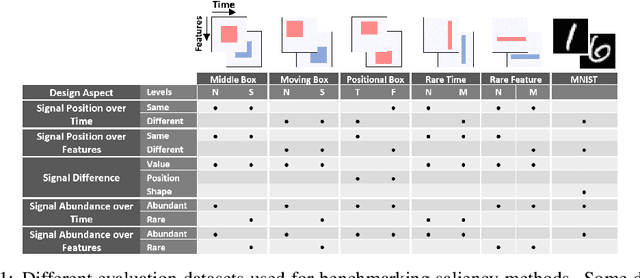



Abstract:Saliency methods are used extensively to highlight the importance of input features in model predictions. These methods are mostly used in vision and language tasks, and their applications to time series data is relatively unexplored. In this paper, we set out to extensively compare the performance of various saliency-based interpretability methods across diverse neural architectures, including Recurrent Neural Network, Temporal Convolutional Networks, and Transformers in a new benchmark of synthetic time series data. We propose and report multiple metrics to empirically evaluate the performance of saliency methods for detecting feature importance over time using both precision (i.e., whether identified features contain meaningful signals) and recall (i.e., the number of features with signal identified as important). Through several experiments, we show that (i) in general, network architectures and saliency methods fail to reliably and accurately identify feature importance over time in time series data, (ii) this failure is mainly due to the conflation of time and feature domains, and (iii) the quality of saliency maps can be improved substantially by using our proposed two-step temporal saliency rescaling (TSR) approach that first calculates the importance of each time step before calculating the importance of each feature at a time step.
Input-Cell Attention Reduces Vanishing Saliency of Recurrent Neural Networks
Oct 27, 2019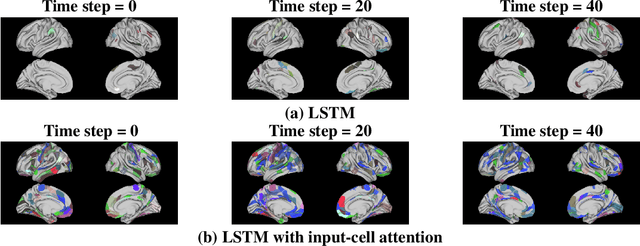
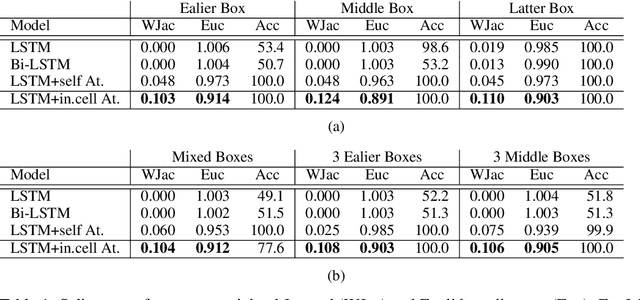
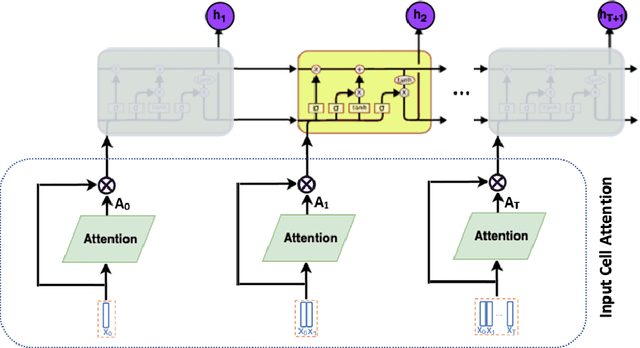
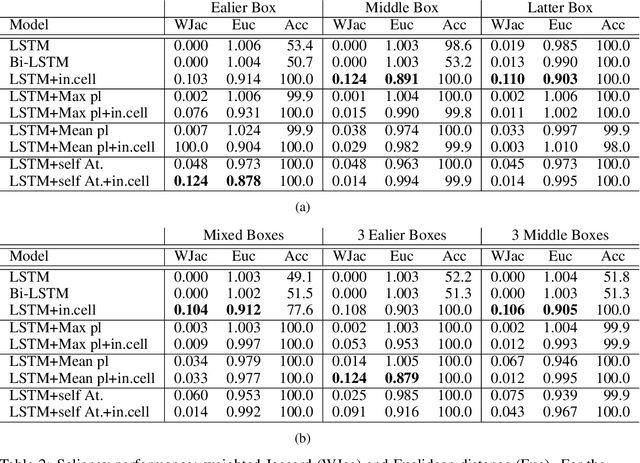
Abstract:Recent efforts to improve the interpretability of deep neural networks use saliency to characterize the importance of input features to predictions made by models. Work on interpretability using saliency-based methods on Recurrent Neural Networks (RNNs) has mostly targeted language tasks, and their applicability to time series data is less understood. In this work we analyze saliency-based methods for RNNs, both classical and gated cell architectures. We show that RNN saliency vanishes over time, biasing detection of salient features only to later time steps and are, therefore, incapable of reliably detecting important features at arbitrary time intervals. To address this vanishing saliency problem, we propose a novel RNN cell structure (input-cell attention), which can extend any RNN cell architecture. At each time step, instead of only looking at the current input vector, input-cell attention uses a fixed-size matrix embedding, each row of the matrix attending to different inputs from current or previous time steps. Using synthetic data, we show that the saliency map produced by the input-cell attention RNN is able to faithfully detect important features regardless of their occurrence in time. We also apply the input-cell attention RNN on a neuroscience task analyzing functional Magnetic Resonance Imaging (fMRI) data for human subjects performing a variety of tasks. In this case, we use saliency to characterize brain regions (input features) for which activity is important to distinguish between tasks. We show that standard RNN architectures are only capable of detecting important brain regions in the last few time steps of the fMRI data, while the input-cell attention model is able to detect important brain region activity across time without latter time step biases.
 Add to Chrome
Add to Chrome Add to Firefox
Add to Firefox Add to Edge
Add to Edge